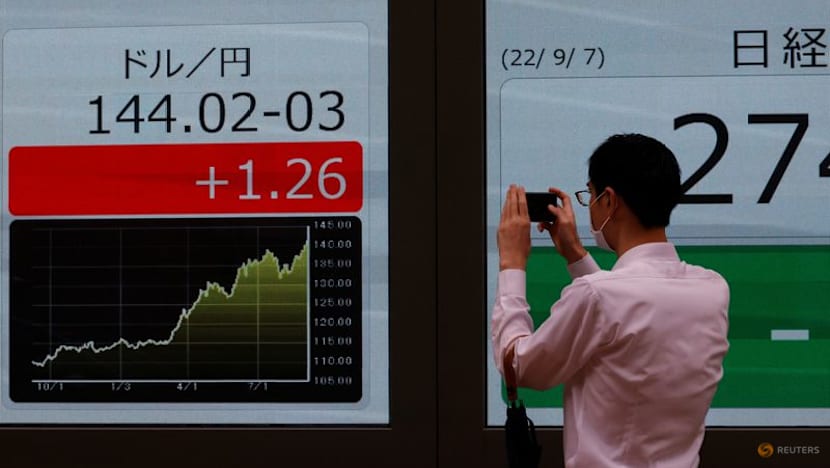Japan may intervene if yen dives toward 160 per dollar, ex-BOJ official says

A man takes a photo of a board displaying the Japanese yen exchange rate against the U.S. dollar outside a brokerage in Tokyo, Japan September 7, 2022. REUTERS/Kim Kyung-Hoon
TOKYO :Japanese authorities may tolerate moderate yen declines but could intervene if the currency sharply depreciates towards 160 to the dollar, said Atsushi Takeuchi, a former central bank official who was involved in Tokyo's market forays a decade ago.
The yen was set for its steepest weekly drop in a year on Friday after fiscal and monetary dove Sanae Takaichi's surprise victory in a ruling party race led to receding expectations of a near-term interest rate hike by the Bank of Japan.
Takeuchi, who headed the BOJ's foreign exchange division during currency interventions from 2010 to 2012, said the yen could stabilise from a narrowing interest rate gap.
The U.S. Federal Reserve is expected to cut interest rates and the BOJ eventually raise rates as it rolls back years of stimulus, which will underpin the yen and prevent a one-sided dive towards 160 per dollar, Takeuchi said.
But the yen's fall may accelerate if Takaichi, who is set to become Japan's next premier, gives markets the impression the government would leave such moves unattended, Takeuchi said.
"Authorities won't mind as long as the yen's declines are moderate. Their alarm bells will start ringing if market players begin talking about the chance of sharp yen declines toward 160 or 170 per dollar," Takeuchi told Reuters in an interview.
"If the yen falls that much, authorities could and must step in. While intervention can't change the broad market trend, it can put a pause to sharp yen declines," he said on Friday.
The yen is on pace for a nearly 4 per cent drop in the week, its biggest fall since early October last year, on market bets Takaichi will expand fiscal spending and pressure the BOJ to delay a hike in still-low interest rates. The Japanese currency stood around 153 per dollar on Friday.
In a television programme on Thursday, Takaichi said she did not want to trigger excessive yen declines. But she refrained from issuing any warning against a recent fall in the yen, saying there were "pros and cons" to a weak yen.
Many market players see 160 yen per dollar as authorities' line-in-the-sand that heightens the chance of currency intervention. In fresh verbal warnings, Finance Minister Katsunobu Kato said on Friday the authorities were monitoring excessive, disorderly exchange-rate moves.
While U.S. President Donald Trump likely favours a weak dollar that gives the country's exports a boost, his administration does not seem to be placing attention on the yen's recent falls, Takeuchi said.
"But Washington may express its displeasure if yen falls accelerate further," he said. "They might even welcome any currency intervention by Tokyo to combat yen slides."
Japan has historically focused on preventing sharp yen rises that hurt its export-reliant economy. But since 2022, its focus has shifted to defending the yen from excessive depreciation, which can fuel inflation and hurt consumer purchasing power.
Takeuchi took part in several yen-selling interventions from 2010 to 2012. He is now chief research fellow at Ricoh Institute of Sustainability and Business.













